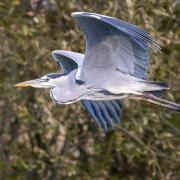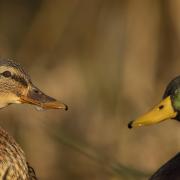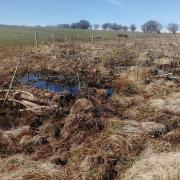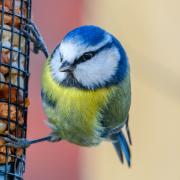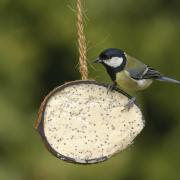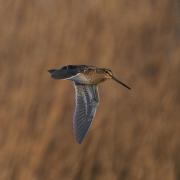Ed Rouse looks at how we can protect our prickly pest controllers - the nation’s favourite species

Can you imagine Somerset without hedgehogs? They have been a fixture in our countryside for so long, but now they are on a slippery slope to extinction. Some say that our prickly friends could be extinct within 10 years.
Hedgehogs have been around for more than 15 million years and 1950s estimates showed that around 36 million resided in Britain. In 1995 the figure was just under two million. More recently, hedgehogs have been diminishing at a more alarming rate – five percent annually.
So why are they disappearing? For a variety of reasons, including being eaten by their natural predators, badgers. Flooding is also a concern, such as those that devastated the Somerset Levels a couple of years ago claiming the lives of great numbers of hedgehogs. Groups such as the RSPB warned of the dangers of floods, underlining the importance of hedgehogs being able to reach areas of high ground, otherwise they would drown. They also stressed that as they were already a nationally threatened species, the floods only put more pressure on them. A couple of years before the floods in summer 2012, Prickles Hedgehog Rescue Centre, based in Cheddar, took in record numbers of hedgehogs following severe downpours that year.
Trudi Howell, animal carer at Secret World, near Highbridge, spoke to us about taking in more hedgehogs and the need for our help: “At Secret World we usually help around 500 hedgehogs a year, but in 2015 we took in 600 of them.”

However it is the human effects on the species that are concerning. The pressures in urban and rural areas are very different; in urban gardens the increased use of impenetrable fencing has led to fragmentation of hedgehog populations, likely to be a contributing factor in falling numbers. Pesticides are another problem; those that contain metaldehyde, an ingredient found in slug pellets, have been discovered in the stomachs of dead hedgehogs in the past. The use of pesticides and herbicides on lawns also reduces the food supply for them, as it kills invertebrates and earthworms, both prey for the hedgehog.
Other areas of human infrastructure can have a profound effect on hedgehogs. Many of us don’t consider just how many hedgehog deaths are caused by roads alone. It has been estimated that up to 15,000 of them are killed each year on Britain’s roads. The size of roads and traffic volume also account for the isolation of the species and the limiting of their movement.
Rural hedgehogs face a whole different set of challenges. The loss of hedgerows is a major concern for them, as it is one of their main movement areas. Modern hedges now have more gaps and are less tight-knit leading to less shelter for them. Furthermore as well as foraging on lawns, they regularly forage in pastures, good examples of which are becoming increasingly rare. They have either become used as arable fields or reseeded, making them less suitable for the spiky creatures.
Hedgehogs are of immense importance to humans. Just one hedgehog can devour more than 200 grams of insects per night, making them a gardener’s best friend. Hedgehogs also serve as natural indicators – as they’re not the fussiest creatures when it comes to habitats, a decline in them points to problems with the environment in general.

Trudi Howell continues “If you see a hedgehog out during the day there may be something wrong.” She explains that juveniles from the second litters of the season struggle to find enough food to gain weight in time to safely hibernate when winter arrives: “These hedgehogs are often in a very poor condition when they arrive and need intensive and supportive care. They will stay with us until they’re big enough to go back to the wild.”
We should all do as much as we can to help this endangered species. It is our responsibility to make sure that hedgehogs are here for future generations to enjoy; we want them to be seen in nature, and not just in children’s literature.
If you find an injured hedgehog or if you need advice and information, please contact:
Secret World Wildlife Rescue: (secretworld.org) based in East Huntsill near Highbridge, specialists in the rescue, rehabilitation and eventual release of orphaned and injured wild creatures.
Prickles Hedgehog Rescue: (prickleshedgehogrescue.org.uk) located in Cheddar is successful in treating and rehabilitating hedgehogs.
The local branch of the RSPCA, based in Taunton: (rspca.org.uk/local/west-hatch-wildlife-centre) is open for admission of wildlife casualties 365 days a year from 8am-9pm.
So what can we do to help? The RSPCA, Somerset Wildlife Trust (based in Taunton, somersetwildlife.org) and Secret World make similar recommendations for the care of hedgehogs:
-Don’t put out biscuits, bread or milk – they cause diarrhoea.
-Put out scraps of food, such as cooked meat in tiny pieces, chopped peanuts (not salted), tinned animal food, sultanas, raisins, small morsels of cheese or hedgehog feed from suppliers.
-Keep water available.
-Leave some wild garden areas, including piles of leaf litter and logs, which can serve as shelter
-Leave holes in fences at ground level for them to move around easily at night.
-Cover any drains, as hedgehogs are curious, but have poor eyesight.
-Make a ramp leading from a pond so they can climb out.
-Ensure you check for the presence of any wildlife, including hedgehogs, before cutting long grass.
-Check before you light a bonfire. They could be sheltering underneath.
-Dispose of any litter carefully as they can become entangled in plastic netting for example.








